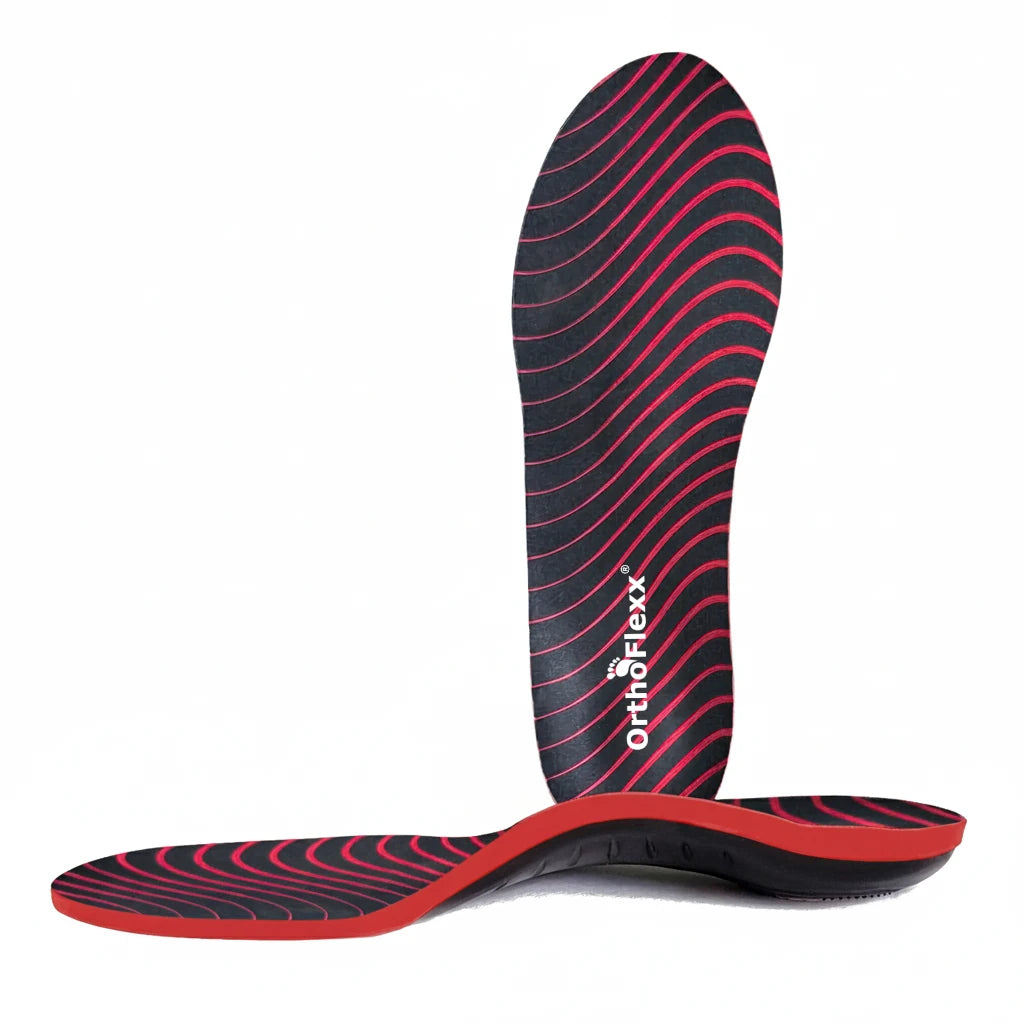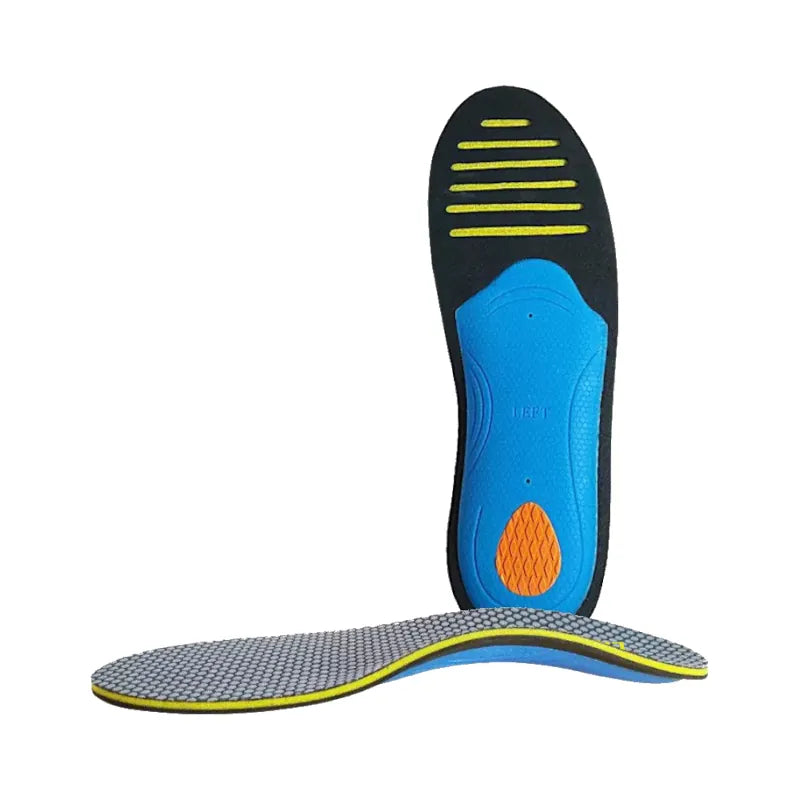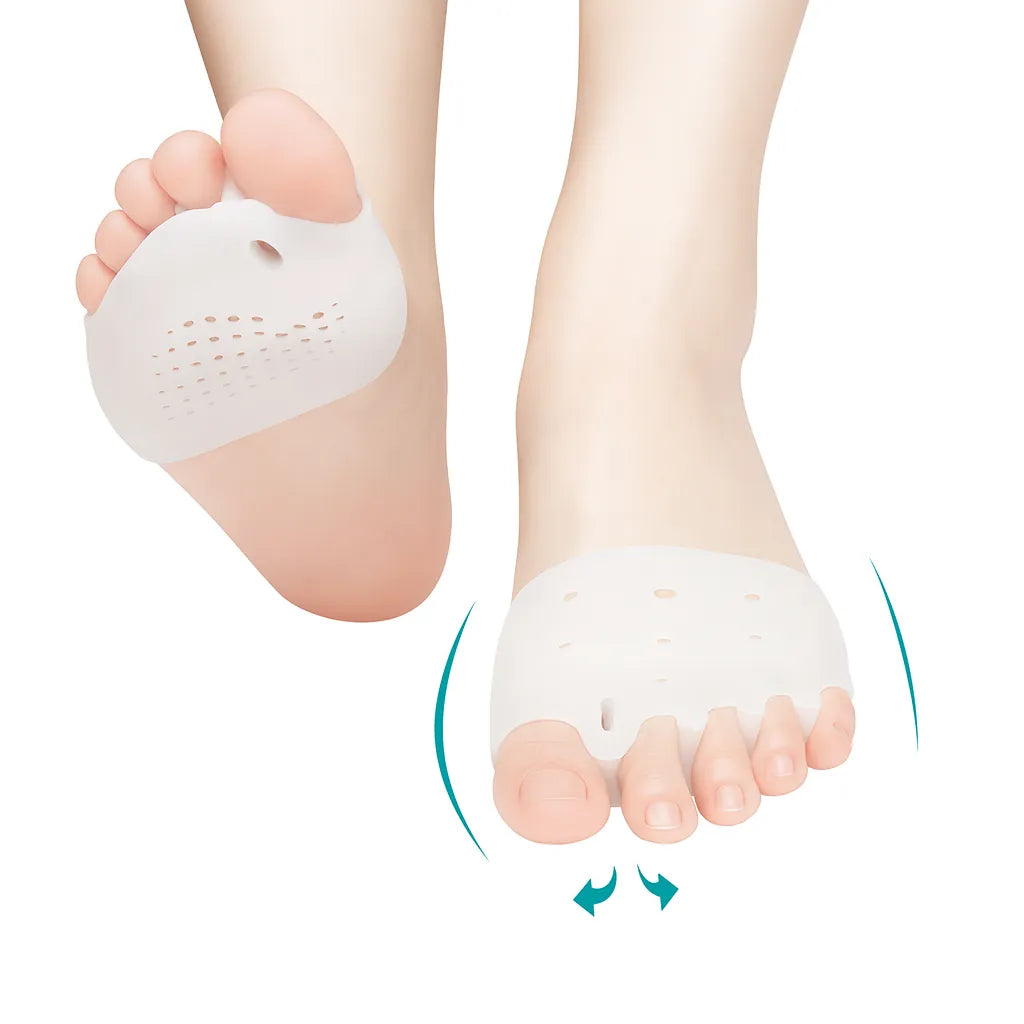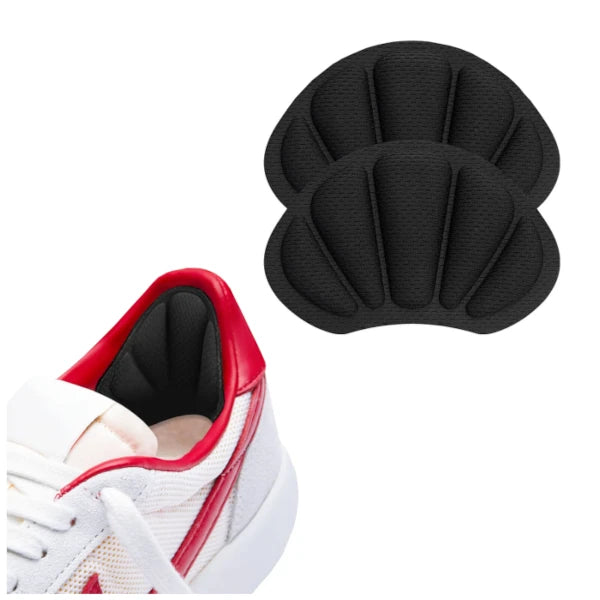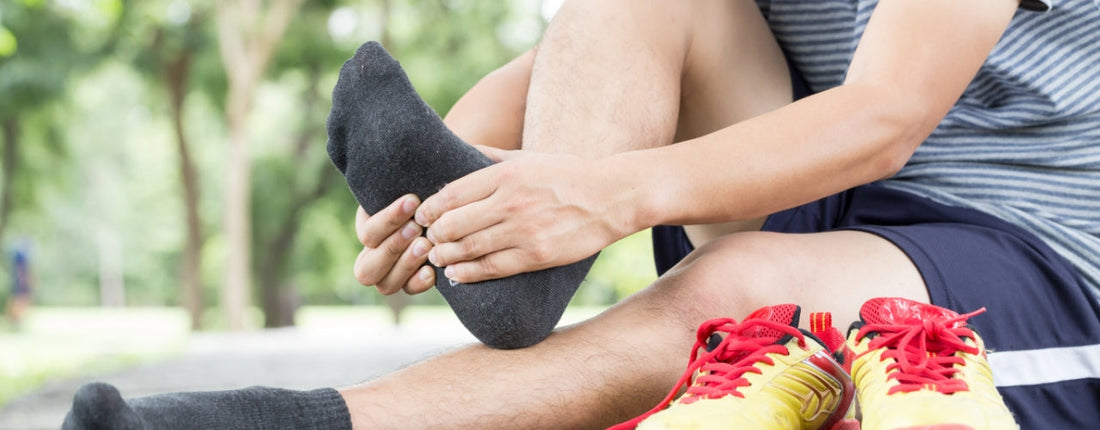
Foot Pain Prevention: Tips for Maintaining Healthy Feet
Share
Healthy Feet 101: Top 10 Tips for Foot Pain Prevention
"Take care of your feet. You have a lot riding on them." - Anonymous
Your feet are the foundation of your body, supporting you every step of the way.
Proper Shoe Fit for Foot Health
To maintain healthy feet and prevent foot pathologies, it's crucial to choose shoes that fit properly. Ill-fitting shoes can lead to discomfort and a range of foot problems. Here are some tips for finding the right shoe fit and promoting optimal foot function:

Choose shoes that fit properly
When selecting shoes, prioritize comfort and support over style. Look for shoes that provide ample room for your toes to move freely without being too tight or too loose. Avoid narrow or pointed-toe shoes that can squeeze your toes together, leading to bunions or other toe deformities.
Avoid ill-fitting shoes
Wearing shoes that don't fit well can cause various issues such as blisters, calluses, corns, and ingrown toenails. They may also contribute to more severe problems like plantar fasciitis or even bone fractures. Ensure that the heel of the shoe fits snugly without slipping up and down when walking.
Find the right shoe size and style
Get your feet measured by a professional regularly since our feet can change in size and shape over time. Different brands may have slight variations in sizing, so try on multiple pairs before making a purchase. Consider the specific activity you'll be engaging in; for example, running shoes should provide adequate cushioning and support.
Use shoe inserts if needed
If you have specific foot conditions or require additional arch support, consider using orthotic inserts or custom-made orthotics prescribed by a podiatrist. These inserts can help alleviate pain and improve overall foot function.
Allow your feet to breathe
Give your feet a break from restrictive footwear whenever possible. Going barefoot or wearing open-toe sandals allows your feet to move naturally and reduces the risk of developing foot problems associated with prolonged shoe wear.
Remember, taking care of your feet is essential for overall health and wellbeing. By choosing proper fitting shoes, you can prevent foot pain and maintain healthy feet.
Importance of Clean and Dry Feet

Keep your feet clean to prevent infections and odor.
Maintaining clean feet is crucial for preventing infections and unpleasant odors. When your feet are dirty, bacteria and fungi can thrive, leading to issues like athlete's foot or toenail fungus. To keep your feet clean, make sure to wash them regularly with soap and water. Pay extra attention to the spaces between your toes, as these areas are prone to moisture buildup.
Ensure your feet are dry, as moisture can lead to fungal or bacterial issues.
Moisture is the enemy. Excess sweat can create a breeding ground for bacteria and fungi, causing additional troubles. To combat this, make sure your feet are thoroughly dry after washing them or coming into contact with water. Use a clean towel and gently pat them dry, paying close attention to the areas between your toes.
By keeping your feet clean and dry, you reduce the risk of infections and unwanted odors. Incorporate regular foot hygiene into your routine as part of maintaining overall foot health.
Nail Care and Regular Foot Inspection

Taking care of your toenails and regularly inspecting your feet are essential steps in preventing foot pain and maintaining healthy feet. Neglecting these areas can lead to discomfort, infections, and other foot problems. Here are some tips to keep in mind:
Trim nails straight across to avoid ingrown toenails.
It's important to trim your toenails straight across rather than rounding them. This helps prevent ingrown toenails, which can be painful and prone to infection. Use proper nail clippers and take your time when cutting them. Avoid cutting them too short as this can also cause discomfort.
Inspect your feet regularly for any signs of redness, swelling, or abnormalities.
Regularly inspecting your feet is crucial for identifying any potential issues early on. Take a few minutes each day to examine your feet for redness, swelling, blisters, or any other abnormalities. This includes checking between the toes as well. If you notice any changes or concerns with your nails or skin during these inspections, it's important to seek professional help.
Seek professional help if you notice any changes or concerns with your nails or skin.
If you notice anything unusual during your regular foot inspections, don't hesitate to seek professional help from a doctor who specializes in foot care (a podiatrist). They have the expertise to diagnose and treat various foot conditions effectively. Remember that early intervention is key in preventing further complications.
Regular nail care and foot inspections are simple yet effective ways to maintain healthy feet and prevent foot pain. By following these tips and seeking professional help when needed, you can ensure that your feet stay happy and pain-free.
Exercises for Optimal Foot Health
To maintain healthy feet and prevent foot pain, incorporating exercises into your routine is crucial. These exercises help strengthen the muscles in your feet, improve flexibility, and enhance overall foot health.
Engage in Foot-Strengthening Exercises
Regularly performing exercises that target the muscles in your feet can help prevent common foot problems. Here are some effective foot-strengthening exercises:
- Toe curls: Sit on a chair with your feet flat on the floor. Curl your toes inward, gripping the floor, and hold for a few seconds before releasing.
- Marble pickup: Place marbles or small objects on the floor and use your toes to pick them up one by one, then place them into a container.
- Heel raises: Stand with your feet hip-width apart and raise yourself onto your tiptoes. Hold for a moment before lowering back down.
Stretch Regularly for Flexibility
Stretching is essential to improve flexibility and prevent stiffness in the feet. Incorporate these stretches into your daily routine:
- Calf stretch: Stand facing a wall with one leg forward and bent at the knee while keeping the other leg straight behind you. Lean forward until you feel a stretch in your calf muscle.
- Toe stretch: Sit on the edge of a chair with one ankle crossed over the opposite knee. Gently pull back on each toe to stretch them out.
Incorporate Balance Exercises
Balance exercises not only improve stability but also contribute to better overall foot health. Try these balance exercises:
- Single-leg stand: Stand on one leg while maintaining balance for as long as possible without touching down with the other foot.
- Heel-to-toe walk: Walk in a straight line by placing one heel directly in front of the toes of your other foot.
By engaging in these exercises regularly, you can strengthen your feet, improve flexibility, and maintain optimal foot health.
Do's and Don'ts of Foot Care
Do's
- Wear comfortable shoes with proper arch support: Opt for footwear that provides adequate cushioning and arch support to prevent strain on your feet. This helps maintain the natural alignment of your foot and reduces the risk of developing foot pain or conditions like plantar fasciitis.
- Use moisturizer on dry areas of the feet, excluding between the toes: Moisturizing your feet regularly can help prevent dryness, cracking, and calluses. However, it's important to avoid applying moisturizer between your toes as this area is prone to moisture buildup and fungal infections.
- Maintain a healthy weight to reduce pressure on the feet: Excess weight can place additional stress on your feet, leading to discomfort and an increased risk of foot problems. By maintaining a healthy weight through regular exercise and a balanced diet, you can alleviate pressure on your feet.
Don'ts
- Avoid wearing high heels or narrow-toed shoes for extended periods: High heels and narrow-toed shoes can force your feet into unnatural positions, causing discomfort and increasing the likelihood of developing foot issues such as bunions or hammertoes. Reserve these types of shoes for special occasions rather than daily wear.
- Don't ignore foot pain; seek medical advice if necessary: Persistent or worsening foot pain should not be ignored. It may indicate an underlying condition that requires medical attention. Consulting with a healthcare professional can help identify the cause of the pain and provide appropriate treatment.
- Refrain from walking barefoot in public places to minimize infection risks: Walking barefoot in public areas like gyms, swimming pools, or locker rooms exposes your feet to potential infections such as athlete's foot or plantar warts. Always wear protective footwear like flip-flops or sandals in these environments.
Remember, taking care of our feet is essential for overall health and well-being. By following these simple do's and don'ts, you can maintain healthy feet and reduce the risk of foot pain or complications.
Maintaining Healthy Feet for Life
Congratulations on completing the sections before the conclusion! By now, you have learned essential tips to keep your feet healthy and pain-free. Remember, taking care of your feet is crucial because they carry you through life's journey. So, let's summarize what we've covered and give you a final push to prioritize foot health.
Firstly, make sure you're wearing shoes that fit properly. Just like a car needs the right tires for a smooth ride, your feet need well-fitting shoes for optimal support and comfort. Secondly, keep your feet clean and dry to prevent infections and unpleasant odors. Treat them like prized possessions that deserve regular pampering. Thirdly, pay attention to nail care and inspect your feet regularly to catch any issues early on. Prevention is always better than cure!
Now that you know how important it is to maintain healthy feet, take action today! Incorporate foot exercises into your daily routine and follow the do's and don'ts of foot care we discussed earlier. Your future self will thank you as you walk confidently towards a pain-free life.
FAQs about Foot Pain Prevention
Can I wear high heels occasionally without causing foot pain?
Yes, it's okay to wear high heels occasionally as long as you practice moderation. Limit the duration of wearing high heels and choose ones with proper arch support or cushioning. Consider stretching exercises before and after wearing heels to alleviate any discomfort.
Are flip-flops bad for my feet?
While flip-flops are comfortable in certain situations, they lack arch support and cushioning which can lead to foot pain over time. It's best to wear them sparingly or opt for sandals with more supportive features when walking long distances or engaging in physical activities.
How often should I change my running shoes?
It is generally recommended to replace running shoes every 300-500 miles or every six months if you're an avid runner. Worn-out shoes can negatively impact your foot's biomechanics and increase the risk of injuries.
Can foot pain be a sign of a more serious medical condition?
Yes, foot pain can sometimes indicate underlying medical conditions such as arthritis, diabetes, or nerve damage. If you experience persistent or severe foot pain, it's advisable to consult a healthcare professional for proper diagnosis and treatment.
Are there any natural remedies for foot pain relief?
Yes, several natural remedies can help alleviate foot pain. These include soaking your feet in warm water with Epsom salt, applying ice packs to reduce inflammation, massaging your feet with essential oils, and doing gentle stretching exercises. However, if the pain persists or worsens, it's important to seek medical advice.
Author Bio

Marlene Carvalho
Certified Sports Physiotherapist of Elite and Olympic athletes; Performance Coach to racing drivers
Marlene Carvalho is a sports physiotherapist passionate about all things sports.
